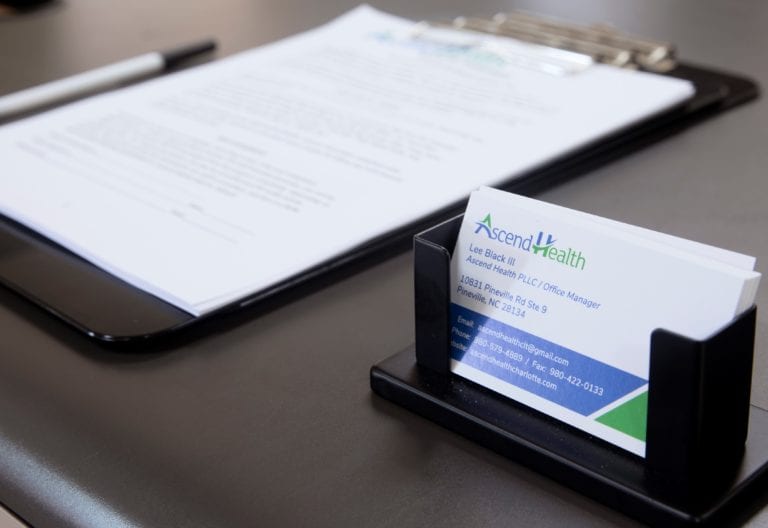How Is Treatment With Suboxone Different than Drug Abuse? Discussing The Differences In the Prescription Medicine & What the Experts Say
What the Experts Say:
Physicians who treat opioid addiction also have the option of utilizing ‘medication-assisted treatment,’ and the most common medications used in the treatment of opioid dependence today are methadone, naltrexone, and buprenorphine (Suboxone). Most people cannot just walk away from opioid addiction. They need help to change their thinking, behavior, and environment. Unfortunately, “quitting cold turkey” has a poor success rate – fewer than 25 percent of patients are able to remain abstinent for a full year. This is where medication-assisted treatment options like methadone, naltrexone, and Suboxone treatment benefit patients in staying sober while reducing the side effects of withdrawal and curbing cravings which can lead to relapse.
Methadone:
Methadone is an opioid and has been the standard form of medication-assisted treatment for opioid addiction and dependence for more than 30 years. Methadone for the treatment of opioid dependence is only available from federally-regulated clinics which are few in number and unappealing for most patients. In addition, studies show that participation in a methadone program improves both physical and mental health, and decreases mortality (deaths) from opioid addiction. Like Suboxone, when taken properly, medication-assisted treatment with methadone suppresses opioid withdrawal, blocks the effects of other problem opioids and reduces cravings.
Naltrexone:
Naltrexone is an opioid blocker that is also useful in the treatment of opioid addiction. Naltrexone blocks the euphoric and pain-relieving effects of heroin and most other opioids. This type of medication-assisted treatment does not have addictive properties, does not produce physical dependence, and tolerance does not develop. Unlike methadone or Suboxone, it has several disadvantages. It does not suppress withdrawal or cravings. Therefore, many patients are not motivated enough to take it on a regular basis. It cannot be started until a patient is off of all opioids for at least two weeks, though many patients are unable to maintain abstinence during that waiting period. Also, once patients have started on naltrexone the risk of overdose death is increased if relapse does occur. Naltrexone is the drug that makes Suboxone treatment different than drug abuse.
Buprenorphine / Subutex / Suboxone:
In 2002, the FDA approved the use of the unique opioid buprenorphine (Subutex, Suboxone) for the treatment of opioid addiction in the U.S. Buprenorphine has numerous advantages over methadone and naltrexone. As a medication-assisted treatment, it suppresses withdrawal symptoms and cravings for opioids, does not cause euphoria in the opioid-dependent patient, and it blocks the effects of the other (problem) opioids for at least 24 hours. Success rates, as measured by retention in treatment and one-year sobriety, have been reported as high as 40 to 60 percent in some studies. Treatment does not require participation in a highly-regulated federal program such as a methadone clinic. Since buprenorphine does not cause euphoria in patients with opioid addiction, its abuse potential is substantially lower than methadone. This is the major reason that makes Suboxone treatment different than drug abuse.
What Is Medication-Assisted Treatment?:
Medication-assisted treatment for opioid dependence can include the use of buprenorphine (Suboxone) to complement the education, counseling and other support measures that focus on the behavioral aspects of opioid addiction. This medication can allow one to regain a normal state of mind – free of withdrawal, cravings and the drug-induced highs and lows of addiction. Medication-assisted treatment for opioid addiction and dependence is much like using medication to treat other chronic illnesses such as heart disease, asthma or diabetes. Taking medication for opioid addiction is not the same as substituting one addictive drug for another.
What Is Suboxone and How Does it Work?:
There are two medications combined in each dose of Suboxone. The most important ingredient is buprenorphine, which is classified as a ‘partial opioid agonist,’ and the second is naloxone which is an ‘opioid antagonist’ or an opioid blocker.
What Is a ‘Partial Opioid Agonist’?:
A ‘partial opioid agonist’ such as buprenorphine is an opioid that produces less of an effect than a full opioid when it attaches to an opioid receptor in the brain. Oxycodone, hydrocodone, morphine, heroin and methadone are examples of ‘full opioid agonists.’ For the sake of simplicity from this point on we will refer to buprenorphine (Suboxone) as a ‘partial opioid’ and all the problem opioids like oxycodone and heroin as ‘full opioids.’When a ‘partial opioid’ like Suboxone is taken, the person may feel a very slight pleasurable sensation, but most people report that they just feel “normal” or “more energized” during medication-assisted treatment. If they are having pain they will notice some partial pain relief.People who are opioid dependent do not get a euphoric effect or feel high when they take buprenorphine properly. Buprenorphine tricks the brain into thinking that a full opioid like oxycodone or heroin is in the lock, and this suppresses the withdrawal symptoms and cravings associated with that problem opioid.Buprenorphine is a long-acting form of medicated-assisted treatment, meaning that it gets ‘stuck’ in the brain’s opiate receptors for about 24 hours. When buprenorphine is stuck in the receptor, the problem ‘full opioids’ can’t get in. This gives the person with opioid addiction a 24-hour reprieve each time a dose of Suboxone is taken. If a full opioid is taken within 24 hours of Suboxone, then the patient will quickly discover that the full opioid is not working – they will not get high and will not get pain relief (if pain was the reason it was taken). This 24-hour reprieve gives the patient time to reconsider the wisdom of relapsing with a problem opioid while undergoing medication-assisted treatment.Another benefit of buprenorphine in treating opioid addiction is something called the ‘ceiling effect.’ This means that taking more Suboxone than prescribed does not result in a full opioid effect. Taking extra Suboxone will not get the patient high. This is a distinct advantage over methadone. Patients can get high on methadone because it is a full opioid. The ceiling effect also helps if buprenorphine is taken in an overdose – there is less suppression of breathing than that resulting from a full opioid.
What Is an ‘Opioid Antagonist’ (Opioid Blocker) and Why Is it Added to Suboxone?:
An opioid antagonist like naloxone is a medication-assisted treatment option for opioid addiction that also fits perfectly into opioid receptors in the brain. Naloxone is not absorbed into the bloodstream to any significant degree when Suboxone is taken correctly by allowing it to dissolve under the tongue. However, if a Suboxone tablet is crushed and then snorted or injected the naloxone component will travel rapidly to the brain and knock opioids already sitting there out of their receptors. This can trigger a rapid and quite severe withdrawal syndrome. Naloxone has been added to Suboxone for only one purpose – to discourage people from trying to snort or inject Suboxone.
How Is Suboxone Taken As a Form of Medication-Assisted Treatment?:
Because it is long-acting (24 hours or more) Suboxone only needs to be taken one time per day. It should be allowed to completely dissolve under the tongue. It comes in both a 2 mg and 8 mg tablet, and a 2 mg or 8 mg filmstrip. The filmstrip is now the preferred preparation because it has less potential for abuse by people with opioid addiction (it cannot be crushed), serial numbers on the filmstrip packs help prevent diversion (trafficking), and the strip dissolves more rapidly than the tablet.Patients should not eat, drink or smoke for 30 minutes before their dose of Suboxone, or for 30 minutes after their dose of Suboxone. Food, beverages, and nicotine can block the absorption of Suboxone. Chewing or dipping tobacco can seriously impair the absorption of Suboxone and should be promptly discontinued by anybody going through medication-assisted treatment. Taken correctly and under medical supervision is key when explaining how Suboxone treatment is different than drug abuse.
What Is Recovery, and How Can Family and Loved Ones Help?:
Put simply, recovery is restoring the life that was lost during active opioid addiction. As a complement to medication-assisted treatment, there are many ways that family and loved ones can help the person suffering from addiction. Family and significant other involvement is an important part of a recovery program. The following is a list of 10 ways you can help
- ut the disease – the biology, psychology, and sociology of addiction.
- Understanding that addiction is not a problem of poor willpower or poor self-control.
- Understanding that this is a hereditary disease that results in long-term changes in the structure and function of the brain that lead to behaviors that are potentially fatal.
- Learning about the behaviors that occur during addiction, why they occur, and how they can be changed.
- Learning how living and social environments play a key role in triggers, cravings and relapse.
- Learning how easily family members can get drawn unwittingly into supporting their loved one’s addiction (co-dependency).
- Encouraging and motivating your loved one to attend and coplete treatment even when they don’t feel like it.
- Understanding that you cannot make the addict get better, but you are not helpless. You can make changes that promote recovery for your loved one, and for you.
- Participating in support groups that help the family of the addict recover (such as Al-Anon or Nar-Anon).
- Attending the family education sessions with your loved one.
- understanding how Suboxone Treatment is different than drug abuse
:
- Learning abo
Source: PsychCentral
Check Out Ascend Health PLLC’s Medication Assisted Treatment Programs today!



